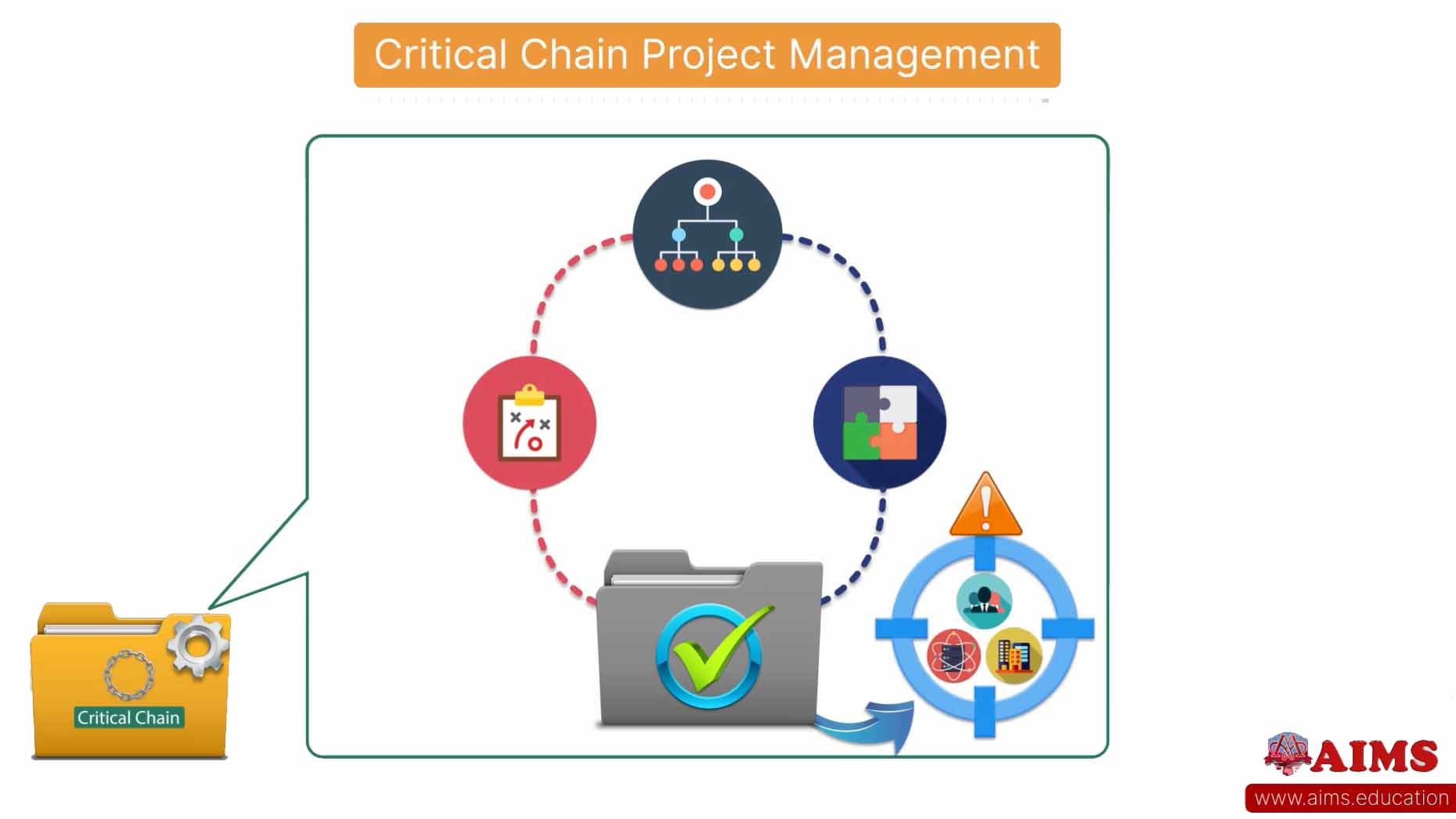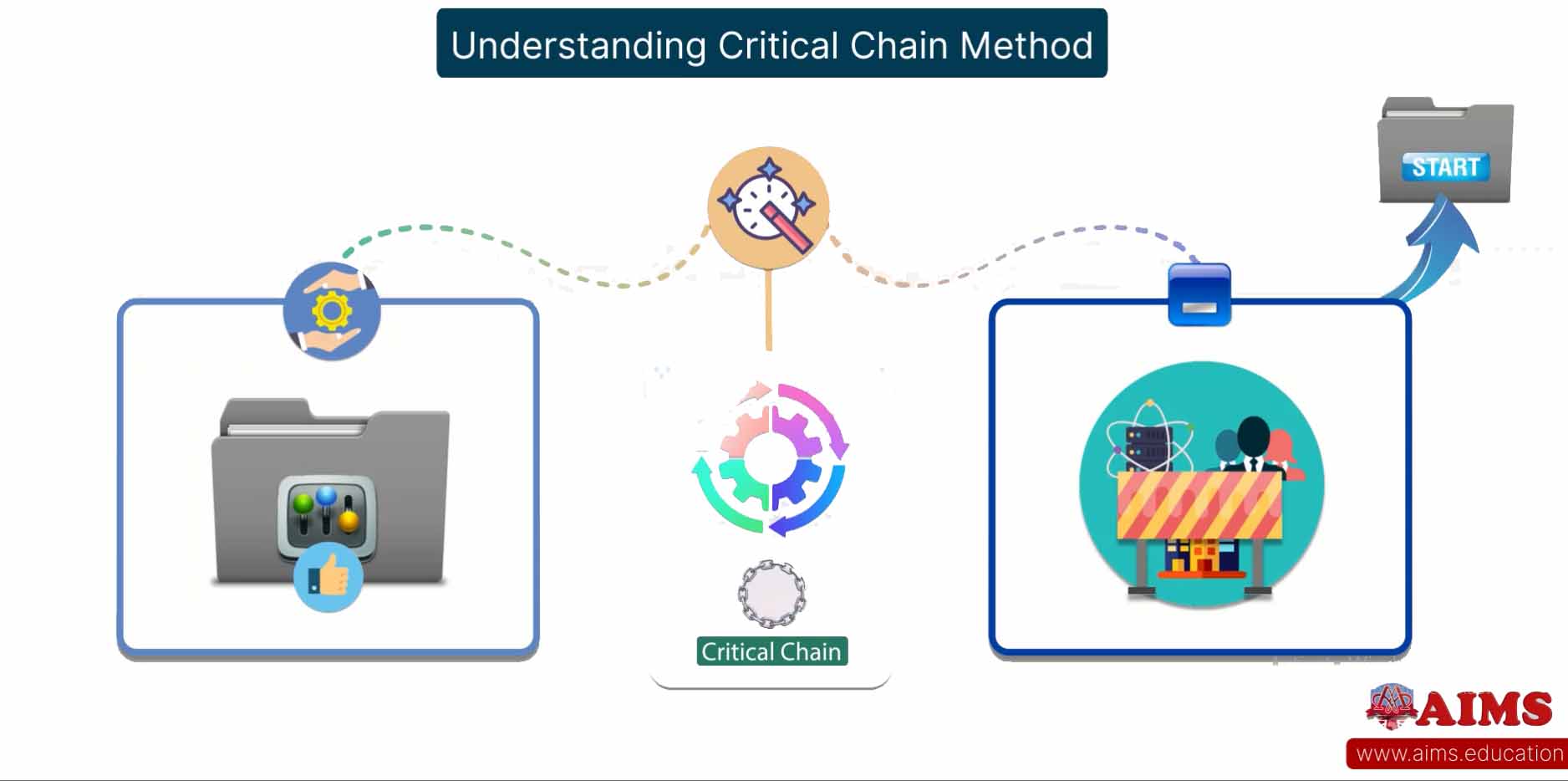What is Critical Chain Project Management?
Critical Chain Project Management (CCPM) is defined as “a method of planning and managing projects that emphasizes the resources (people, equipment, physical space) required to execute project tasks.” It was Eliyahu M. Goldratt, the brilliant business management expert and renowned writer, who developed this in 1997. Goldratt’s ideas on critical chain project management are based on one of his earlier creations, the Theory of Constraints (TOC). The critical chain method is different from the more traditional management philosophies based on the PERT algorithm and critical path management. These methods are focused on rigid scheduling and task order; while the critical chain method is about keeping the resources leveled and expects more flexibility during the start times.

Critical Chain Method:
The CCPM has a strong focus on the project schedule. It minimizes project changes and tries to bring down the cost of project overruns by improving the schedule performance.
It aims to bring about a more positive result by changing the project control and management system as well as the project plan. One of the objectives is to extract better performance from the project team and the supporting staff. It can help minimize most of the resource constraints before the start of a project and makes use of buffers for effective project control. It is equally applicable to waterfall or you may get started with agile project management methodology.
How the Critical Chain Project Management Works?
- CCPM emphasizes the critical chain and not the critical path as the project constraint.
- It uses 50 percent of the probable activity time. It makes use of buffers to account for the uncertainty of activity performances and estimates.
- The buffers can be used as a highly effective measurement tool for controlling the project schedule.
- The projects are linked to the constraining company resource using buffers, which consider factors such as activity duration variability.
- CCPM aims to modify and improve the behavior of the project team, enforce early reporting of activities, and eliminate multitasking.
This lecture is discussed in more detail, during AIMS’ Online Project Management Certificate Program and diploma in project management programs. These online programs are UK Accredited and lead to PhD in project management.

Merits & Demerits of Critical Chain Scheduling:
Critical chain scheduling is a method that is based on resource-leveling. For any company, the perfect scenario is when there is absolutely no shortage of resources. But such situations are never the case in reality.
“Most of the projects that are run by a company have to be managed with limited resources. Resource levelling is an important factor in any project. CCPM scheduling can be very useful for projects that require a huge amount of resources, so that the company can manage their deliveries in an efficient manner.”.
Key Note!
1. Merits:
Since the resources are mapped out, you will know what is available for different stages of the project. This makes collaboration on tasks easier.
2. Demerits:
Not very useful for smaller projects that require a quick turnaround time as it requires additional buffers at different stages of the project.

Critical Chain VS Critical Path:
The difference between a critical chain and a critical path is that the former goes from the start of the project to the conclusion, while the latter ends at the start of the buffer allocated to the project, referred to as the “project buffer”.
In the critical path, we make use of activity sequencing while in CCPM, we use its’ scheduling. The critical path method is more focused on deadlines and milestones, critical chain emphasizes resource utilization.

Critical Chain Project Management Example:
Many Critical Chain Project Management examples and applications can be found in the IT industry.
- The application of this principle has helped many IT companies bring down delivery times and ensure that the projects are completed within the pre-decided budget.
- It is also used to prevent overrunning of the budget and delivery times in the semiconductor industry, embedded systems projects, and other high-tech projects.
